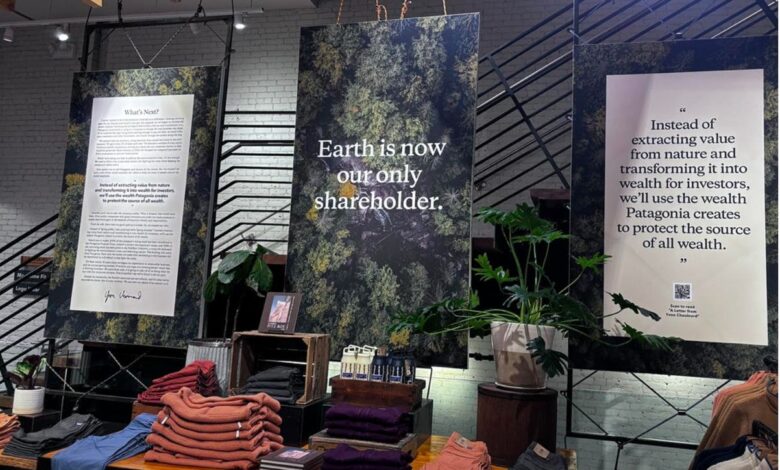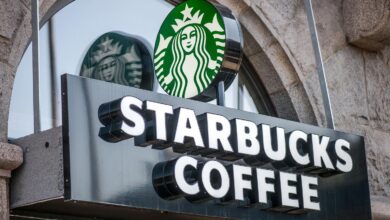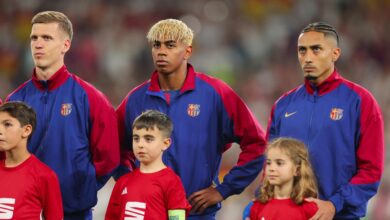14 Strategic Ways The Role Of Physical Retail Has Changed

📝 usncan Note: 14 Strategic Ways The Role Of Physical Retail Has Changed
Disclaimer: This content has been prepared based on currently trending topics to increase your awareness.
Patagonia Store In SOHO New York With Its Mission Statement
Michelle Greenwald
The ROI of in-store sales is no longer the only value and metric for physical retail sales. There are so many more roles it plays that go into the entirety of omni-channel sales, brand image creation, and brand experiences. Below are 14 important strategic roles stores play for brands, though the precise impacts of each can be challenging to quantify.
- Communicating Brand Missions & Values
Mission Statements On The Walls of Microsoft & Whole Foods In New York City
Michelle Greenwald
A key role stores play is sharing the company’s mission and values. Not all retailers take optimal advantage of this opportunity but ones that do it well include Whole Foods, Microsoft and Patagonia. Missions and values can be communicated on walls, packaging, and shopping bags. Patagonia showcases its sustainability mission throughout its stores, through extensive educational signage, descriptions of it’s Worn Wear program that sells lightly used clothes, and the furniture and fixtures which have been repurposed from prior lives.
2) Brand Storytelling
Nike in-store digital signage about it’s sneaker design, Allbirds’ shoe box and Tom’s VR virtual giving trip.
Michelle Greenwald
Brand stories are told through information on walls, boxes, and via digital technology. Stories provide background about the product’s inspiration and unique features which all add to the value perception. The Nike House of Innovation store in Manhattan showcases the high- performance technology and materials used in their shoes through displays and videos. Allbirds tells the story of its proprietary natural materials inside their shoes, on packages, and on wall displays. Tom’s shoes showcased its one for one giving model through abundant in-store signage, on product labels, on an interactive kiosk, and through an emotional, immersive VR video in a corner of the store that took viewers on a virtual giving trip to a small village in Peru.
The Bond No 9 NYC perfume store in Manhattan including a coaster perfume is sprayed on
Michelle Greenwald
At Bond perfume stores in NYC, shops are designed to sit clients down and have sales people tell them one-on-one, the brand’s inspiration story of how the founder fell in love with New York and developed fragrances to represent each neighborhood. The multi-sensory experience involves spraying scents on absorbent round cards visitors can take home that list all the products and remind them of the fragrances.
3) Omni-channel, Friction Free Support and Integration With Online
Norstrom Flagship Store NYC Curbside Services and Nordstrom Local Satellite Location
Michelle Greenwald
Nordstrom is one of the best practitioners of omni-channel retail. Like so many retailers, they started to offer BOPIS (buy online, pick up in store) and curb-side pick-up during COVID. When they launched their flagship Manhattan store by Columbus Circle in 2018, they simultaneously launched satellite Nordstrom Local storefronts around Manhattan. At Nordstrom Local, consumers can receive packages, examine their purchases, try on clothes they bought, have them tailored by the in-house tailer, have an item gift wrapped, or leave the items to be returned. Customers can purchase Nordstrom products digitally at Nordstrom Local stores 4 different ways: through RFID tags on mannequins, from a large website kiosk screen, from associates who can help them search the Nordstrom site for items they’re looking for, or from their own mobile devices.
4) Showrooming & Webrooming
Showrooming happens when people go to stores to check out products and then buy them online. Webrooming is the opposite. People look online and then purchase the products in-store. Most direct-to-consumer brands including Casper, Brooklinen, ThirdLove, Naadam, and Warby Parker have found that in markets where they have stores, online sales are at a higher rate. Stores create awareness among passers-by, and those interested the products can check them out in person to be more certain they’ll like them before buying.
5) Risk-free Product Sampling & Product Information
If I could only afford to do only one thing in my marketing plan and I had a demonstrably better product, it would be some type of free product sampling. Apple stores are the ultimate example. Potential buyers try products risk free and can have features explained to them by in-store personnel. Running stores that have treadmills for buyers to try out their sneakers before buying and Costco’s in-store product sampling both increase purchase likelihood either in-store at that time, or later online.
6) Education, Entertainment, Discovery and Creativity
Pre-Christmas Apple Store animated panel encouraging visitors to make their own holiday greeting cards
Michelle Greenwald
A fabulous example of education and discovery is the cigar shop and mini factory Martinez Cigars in Manhattan’s Chelsea neighborhood where workers carefully craft beautiful cigars. It’s fascinating to watch them transform piles of loose tobacco leaves by compressing and hand-rolling them into neat, compact cigars. The shop transports customers to Cuba. The wine store, Magatzem Escolà, in Barcelona offers fun vermouth making workshops. Understanding artisanal processes give customers insights into the craftsmanship and care that goes into into making the products.
Apple pre-Christmas wall panel encouraging store visitors to make their own holiday cards
Michelle Greenwald
Apple stores encouraged holiday shoppers to make greeting cards with their photos and videos, which seemed like a fun, creative activity.
7) Community
Many stores have programs that involve customers in communities, whether it’s a knit shop with knitting groups, REI that has lectures and group activities related to sports and travel, Lululemon with in-store or nearby yoga classes, or Nike Run Clubs that meet at Nike stores, all bring people with common interests into their shops, creating the added value of social or health and wellness-related experiences. These retail outlets become a part of their targets’ lives, and they encourage repeat store visits.
8) A Lifestyle Place To Hang Out
Increasingly, stores are offering places for customers to come and stay a while. Some Santander and Capital One bank branches now have cafés. Louis Vuitton in New York, Zara in Madrid, Printemps in Paris and NYC, and Restoration Hardware in NYC all have bars and/or restaurants that attract new customers, create another reason to visit their stores, and increase dwell time and average spend per visit.
9) Media Channel, Social Content, “Instagramability”
Photos of Coach NYC Store, Puma NYC Store and Chicago Under Armour Store
Michelle Greenwald
Many retailers invent “instagramable” items to draw passers-by into their stores to take pictures. When shared on Instagram accounts, the posts create awareness for the stores. The Coach, New York 5th Ave. store has a huge dinosaur made out of assorted handbags, the Puma Manhattan store has a giant sneaker customers stand next to or climb into for photos, and Under Armour in Chicago has a giant has a giant torso customers can take a selfie with. Events like influencer make-up demos at Sephora, or basketball player appearances at the NBA store, or musicians playing at a Harmon Kardon sound system store, all create content for branded social media and newsletters.
10) Experiential To Get People Off The Couch
Roca Gallery, is a fabulous store for buying sinks, toilets, bathtubs and showers that creates the analogy of an art gallery, turning their star architect designed stores into highly memorable experiences. In the Barcelona store there was an 11-minute video synchronized around 3 walls of the showroom with water of every type in motion… rivers flowing, ice cracking. Another wall had an engaging ethnographic, floor to ceiling video take on all the ways people use bathrooms (brushing their teeth, putting on make-up, diapering their kids). The experience puts visitors in a water frame of mind and made them feel they’re visiting a brand that values elevated water experiences.
11) Customization & personalization
Lego store NYC customization station and American Girl Doll NYC create your own doll and doll fashions
Michelle Greenwald
Customization and personalization are increasingly being offered by stores, from Nike and Puma where you customize your sneakers, to Lego where you personalize your construction sets, to American Girl Doll where you create dolls that match a child’s style and personality, to perfume stores like Olfactory NYC where you customize fragrances. Do it yourself customization becomes more than just a purchase. It’s entertainment and an opportunity to express your creativity.
12) E-commerce Fulfillment
Last mile e-commerce delivery is expensive for brands, and so are merchandise returns. Retailers like Zara, Walmart and Whole Foods are dedicating parts of their stores to e-commerce fulfillment. Walmart claims that their 4,700 stores are located within 10 miles of 90% of the U.S. population. Using them for e-commerce fulfillment and returns can significantly lower distribution costs.
13) In-store Tech Can Result In Better Purchase Decisions
Lego store consumers can place package bar codes next to video monitors to see what each set looks like constructed. Sephora’s in-store facial scan monitors help customers quickly experiment with many combinations of make-up and looks. Lowe’s VR headset capability enabled customers to visualize an entire bathroom, with a sink, bathtub, floor tiles, and wallpaint colors all together. These devices help customers make better purchase decisions because they can better visualize what they’re getting before buying.
14) Retail Media For Better ROI & Customer Targeting
Some predict retail media will be the largest media form of all. It’s growing at a torid pace, thanks in part to data privacy and 3rd party online cookie tracking going away. Retailers have customer purchase data which is of value to brands. Over the past 10 years, more and more retailers have realized their ability to use this data to help brands reach consumers, and it has become a large new revenue stream. In categories like apparel and groceries, impulse purchase can account for between 50 and 70% of brand sales. Advertising in stores can significantly increase brand awareness and interest.
Key Take-Aways
The lesson from all these strategic in-store marketing options is that retail has a huge impact on total brand image and sales across all channels and it’s therefore critical to think through thoroughly all the ways to maximize customer contact opportunities. Every functional group should be involved… Marketing, Sales Planning, Merchandising, Packaging, Consumer Promotion, Advertising, Social Media, and Marketing Analytics.




